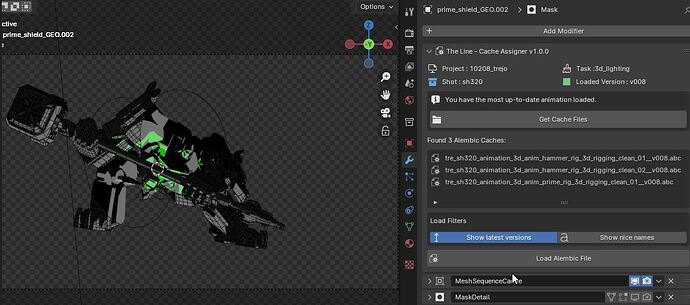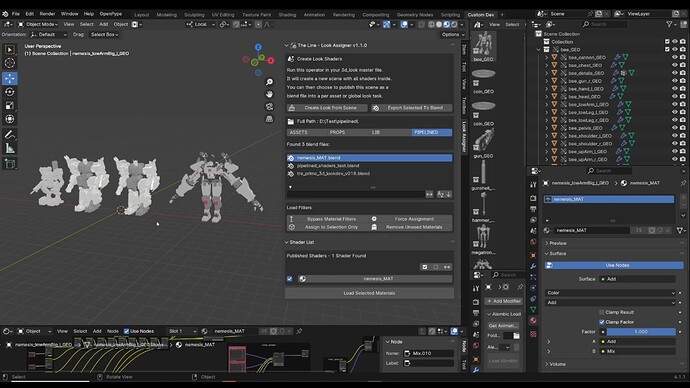Hi @Nielsm
I wouldn’t say we are a standard bearer for this but we have spent some time looking into this particular workflow here at THE LINE.
We too, use an animation > lighting pipeline of Maya and Blender with AYON, and this is dictated by the aesthetic we generally go for as a studio. We use Lineart and grease pencil heavily, so some of our workflows are borne of being able to preserve these setups at the lighting stage, yet still being able to re-unify the animation from the animation phase.
As you’ve found out, the industry alembic workflow is wholly destructive, which is great when you have the tools to re-unite shaders with assets, but a pain without it.
There’s also the fact that Blender’s implementation of alembic is centred around their datablock architecture, so it’s not quite the same as other DCCs. I actually found it similar to the old PC2 workflow, where the vertex cache is added to the base geo. This is how we use it, rather than destroying the geometry, we version the alembic path inside the MeshSequenceCache from the ABC animation. This way we can update animation changes without destroying any L&R setup. We have an addon to handle this but it’s something @BigRoy has kindly looked into implementing “properly” in AYON as well.
- lighting files are setup ahead of time (suits us as we always need to have concrete look dev)
- shading setups can be linked so they are flexible to changes in production.
What we also implemented on the 3d mechs during our Overwatch/Transformers job was a kind of workflow clone of the Look Assigner from AYON’s Maya host.
This uses blendscene to extract and publish a file containing the shaders from a particular asset, with custom attributes added to the shaders (like a simpler version of the cbld workflow) The look assigner is able to grab these shaders in the L&R file and reassign them to the assets in the scene. There’s some extra bits like override shader assignment and handling blender’s cloning protocol (automatically adding .001 .002 etc)
The source code is on our github which you are welcome to grab - please note it’s a tool that was built around the specific way we work. So it might give you a steer as to how we approached it. It’s not 100% tied to AYON but it’s certainly trying to be! It does allow us to use quite a lot of the benefits of AYON between the two DCCs 
Final thing is also to do with compositor graphs setups for lighting. This also needs to be non-destructive, as there might be steps to comp and adjust custom AOVs before piping out the results to the output. (we might combine EEVEE and Cycles renders into the same output stage, e.g. for reflections) So we look to re-path output nodes rather than re-creating, based on a solid and defined output schema we set in pre-production.


